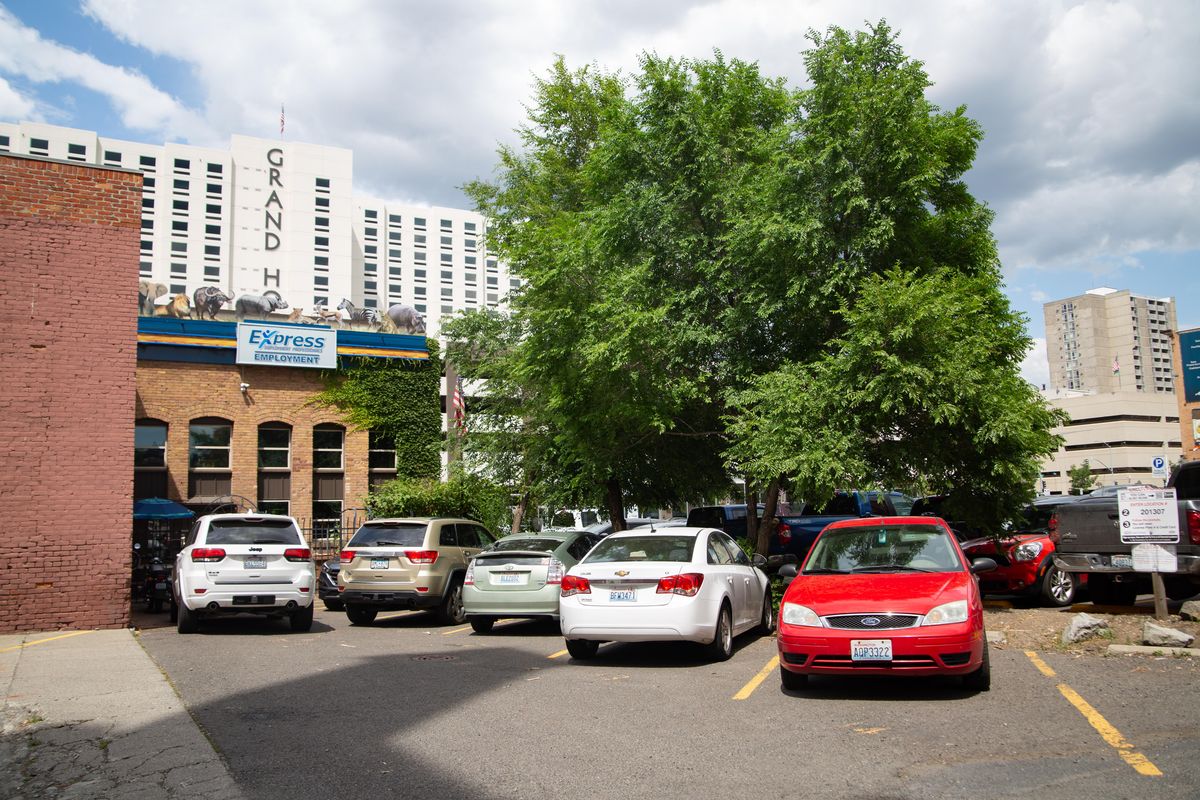Downtown Spokane Partnership will pay businesses for projects that deter crime and nuisances

When the “slab” was removed, things changed.
It was just a simple concrete loading dock on the north side of the American Legion Building in downtown Spokane, but it became a nuisance as young men gathered and drank, said Dan Hall, director of the Downtown Spokane Partnership’s clean and safe team.
When the building was rehabilitated in 2003, the slab was removed, the daily drinking dried up and the calls stopped coming in, Hall said.
“It changed immediately,” Hall said.
Now, DSP is trying to replicate the successful slab removal with a program aimed at decreasing nuisance and criminal behavior in the city core through the design of buildings and landscaping. In short, the program will offer up to $2,500 in matching rebates for property owners who make changes to their building’s exterior. The group has set aside $26,000 for the program, paid for with the business association’s members’ dues.

Overgrown hedges and trees, deep shadows, doorway alcoves and lack of security cameras can all add to a building’s use for “nefarious” activities, said Mark Richard, DSP president, adding that the program will discourage “everything from vandalism to assaultive-type behavior.”
“This is a national, probably global, best practice on how you can strengthen your surroundings in such a way that you discourage crime and nuisance activities from occurring,” Richard said, adding that design can also give people the perception of safety, which is equally important.
Using environmental design to discourage certain behaviors is nothing new to Spokane. In 2013, several business owners installed devices that emitted a steady, high-pitched squeal generally heard by younger people to discourage loitering around the buildings.
Behind the Fernwell Building, fencing has been installed to keep people away from the building’s heating and air-conditioning units.
“People would come in and sleep on the heaters during the winter, or stay cool in the summer,” Hall said. “Once they put the fencing in, the problems stopped.”
Asked what problems he was referring to, Hall pointed to a syringe on the ground.
An alcove in the Parkade garage plaza is now blocked by an iron gate, but it “used to be notorious. Now it just has trash.”
“People sleeping,” Hall said. “Fornicate is probably the best way I can put it.”
The best use of the rebate money, Hall said, is for surveillance cameras, which could not only record but also deter nuisance behavior. Both he and Richard said swaths of downtown Spokane don’t have camera coverage.
Hall said he doesn’t equate homelessness with lawlessness, and notes that most situations he responds to involve people who aren’t homeless. Still, the program and potential proliferation of cameras comes at a contentious time, as concerns about homeless people downtown have taken center stage in this year’s mayoral race, and debates about the role of surveillance rage in San Francisco and Detroit.
As the New York Times reported Monday, “video from thousands of cameras stationed around Detroit, at gas stations, restaurants, mini-marts, apartment buildings, churches and schools, streams into the Police Department’s downtown headquarters,” prompting public outcry over the use of facial recognition software. In May, San Francisco banned the use of facial recognition software by police and other city departments, the first city to outlaw the surveillance technology.
Spokane City Council President Ben Stuckart promoted the use of deterrent design in 2017, when tons of boulders were placed below Interstate 90 in an effort to stop homeless people from camping there. Stuckart said the move was part of a larger project to get homeless people to take advantage of homeless services the city provided. Now, as a candidate for mayor, Stuckart describes the complex nature of homelessness, and argues it’s in large part to due to the city’s and nation’s affordable housing crisis.
Nadine Woodward, a former TV news anchor who is also running for mayor, speaks in starker terms about the “criminal homeless.” She has suggested the city should consider forcing drug addicts into treatment for addiction, which she blames for much of Spokane’s homeless population.
Recent statistical crime reports from the Spokane Police Department show that downtown crime is down 17%, including drops in both property crimes and violent crimes, from last year. Aggravated assaults are also down, from 61 to 46, a 25% decrease from 2018. Still, that drop comes after a year in which aggravated assaults went up significantly downtown, and remains higher than the total number of such reports from 2017, which counted 28.
Richard, at the DSP, said the design program is intended for nuisance crimes, such as graffiti or car prowling. He warned that such crimes can lead to more serious offenses.
“This will discourage everything from vandalism to if assaultive-type behavior, if somebody is engaged in an activity that is frightening employees, or verbally accosting them or all the way to property theft and even car prowling,” he said. “Behavior that is unbecoming of a person, whether they’re just harassing or intimidating.”
Richard also pointed to drug use as a problem downtown.
“When people have drug addictions, they’re not in their right mind. They’re shouting,” he said. “That definitely leads all the way into misdemeanor and felony crimes.”